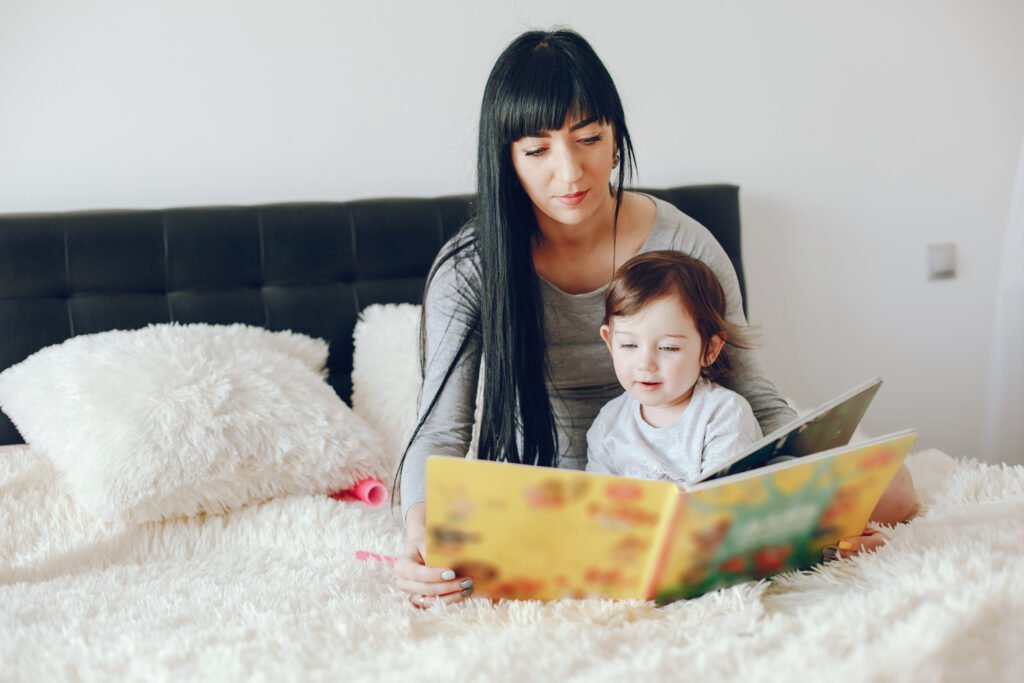
Reading aloud to your child is one of the most powerful ways to create calm and connection at the end of the day.
It’s not about ticking off a developmental or literacy milestone.
It’s about presence and connection at the end of the day.
It’s about anchoring your child in the safety of your presence your voice and the bond during your time together.
But here’s the truth: this beautiful tradition is quietly fading.
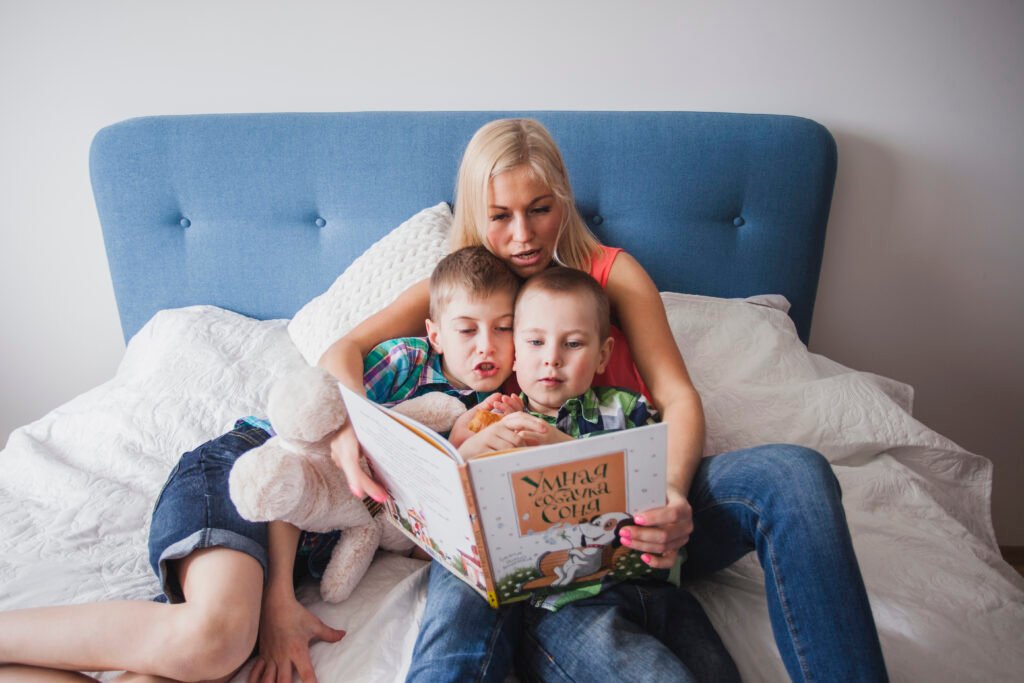
Recent reports show a clear decline:
I know it’s not that parents don’t care.
It’s that we’re stretched thin. We’re tired. And sometimes, reading one more book feels like one more thing before we can finally relax at the end of an already very long day.
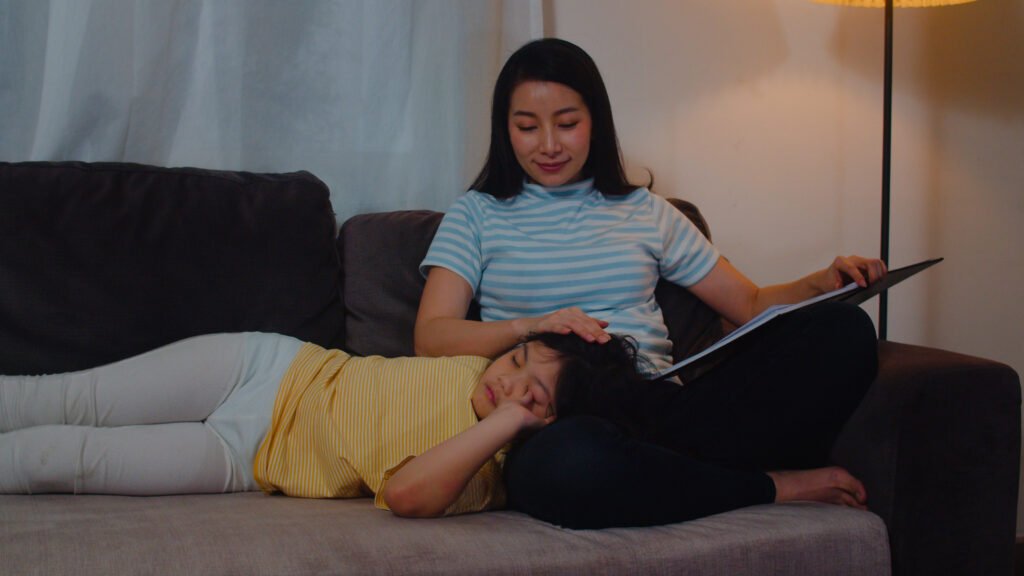
1. Create a growing story with your child (with a little help from ChatGPT)
You can ask ChatGPT to write a short bedtime story featuring your child’s name, their favourite toy, and even the little events of their day.
Every night, the story can grow.
You can make it silly. You can make it sweet.
You can co-create it together as your own special family tradition.
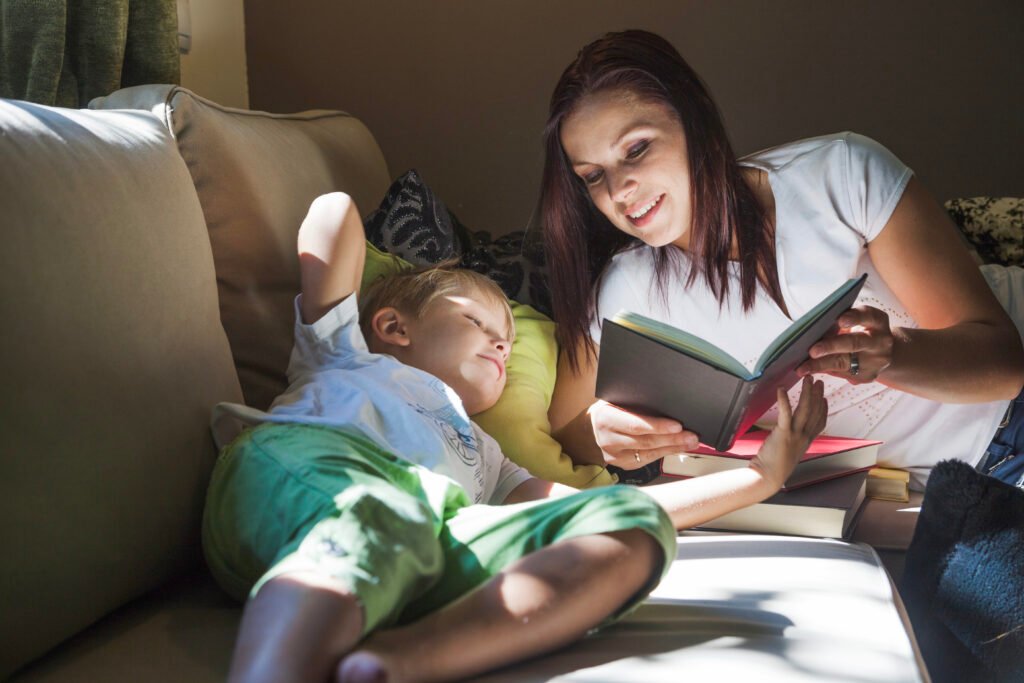
This gives your child something to look forward to—not just a book, but their own world to step into with you.
Example prompt: “Can you write a bedtime story about four-year-old Noah and his dragon named Pickle who doesn’t like brushing his teeth?”
Every night, ask your child for some prompts for tonight’s bedtime story, add them to your GPT app, then print it off ready to read that night. This helps promote excitement for the story they’ve created, sparks their imagination for planning the next one, and creates beautiful memories that will last a lifetime. Imagine adding one prompt a day for a whole year, creating a unique story every day for 1-5 years, and then saving all of those stories to give to your child years later to read to their own children. The memories of those special times pass on to the next generation.
2. Make your own bedtime picture book
One of my favourite ways to make bedtime smoother is to create a personalised picture book of your child’s actual bedtime routine.
Use photos of them going through each step—from Dinner routine to brushing teeth, hopping into bed, story time, special ways we say goodnight.
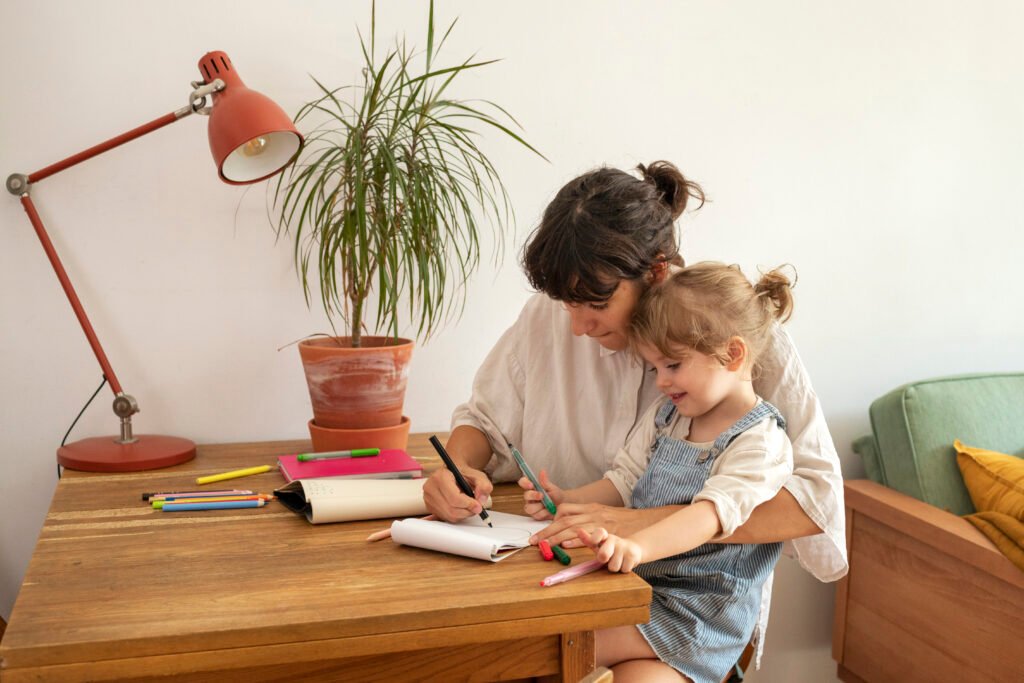
Turn it into a visual story they read with you each night—seeing themselves as the main character who winds down for sleep. Let’s face it toddlers love looking at themselves as the main character.
Want help with this? You can download my free Bedtime Book Template here and start building your own tonight.
3. Visit your local library
Libraries aren’t just about borrowing books. They can become a weekly rhythm that builds anticipation and choice.
Let your child pick what they want—yes, even if some of them are the same books for the fifth week in a row.
Make it part of your routine:
“We get our new bedtime books on Tuesday!”

It’s low-cost, low-pressure, and adds variety and fun to reading together for both you and your children.

Reading doesn’t have to look like a picture-perfect Instagram post.
Some nights it may be a few pages and a cuddle. Some nights it’s a made-up story whispered in the dark.
What matters is that your child feels your presence.
That they hear your voice as the last thing before they drift to sleep.
That they feel seen, safe, and connected. They open up to having conversations
You’re not just helping them fall asleep.
You’re showing them that you want to spend time with them, building their emotional memory— one story at a time.
Download your free Bedtime Book Template and start creating your child’s personalised bedtime story tonight.
Need help creating a routine that works for your unique child?
Let’s chat about a one-on-one consultation that can bring calm, structure, and connection back to your evenings.

You deserve a smoother, calmer routine—and now’s the perfect time to grab the tools that help.
From settling support to sleep saviours, we’re giving you up to 50% off some of our most-loved essentials